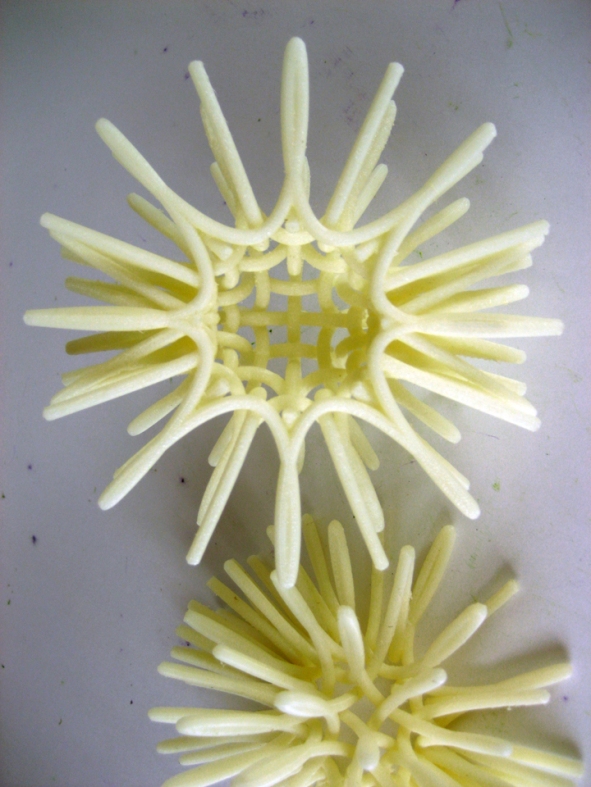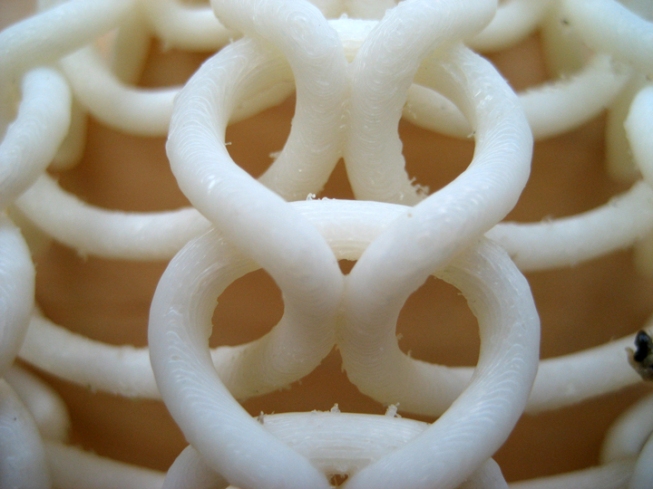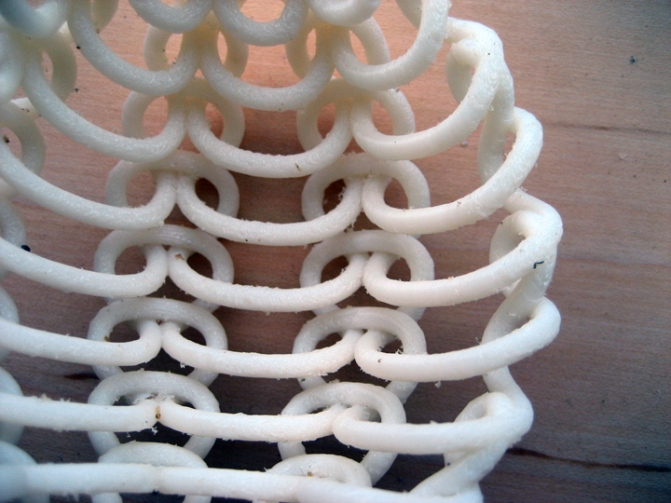August 22-24 , 2011 the last and final workshop of the Digital Crafting Workshops series was held at the Design School in Kolding Denmark. Workshop 5, titled Textile Logics: How to Brace, was run by Mette Ramsgard Thompsen Head of CITA in Copenhaen, with invited guest Sean Alquist from the Institute for Computational Design at the University of Stuttgart.The workshop focussed on the relationship between digital tools and the fabrication of variegated textile tension structures. Textile designers Vibeke Riisberg , textile engineer Joy Boutrup, and textile manufacturing technical designer Helene Jensen from the Design School at Kolding helped guide 3 teams of architects, engineers, artists and designers in creating three versions of tension structures from different types of variegated textiles.On Day 1, Teams designed the external shape of the tension structures as well as the textile itself on laptops. Vibeke and Helene worked with teams to produce knitting samples and tested techniques. The picture above is the the external shape and textile my team designed, in this image it is fully tensioned. In this case the textile acts like a net. Stresses are moving primarily through the thicker parts of the textile.On Day 2 teams began to process their textile patterns for the knitting machine. The picture below shows the fabric our team designed directly from the industral knitting machine. You can see that the fabric has a lot of bubbles that do not carry so much stress.
Tools
The workshop provided a unique opportunity to fabricate using tools from the textile and commercial apparel industry. Here are some pictures of the tools used to fabricate our tension structure. The sewing machine below, sewed the loose ends of the knit together with a polyester and nylon thread, and sliced off the leftover part of the seam as you stitched. Very fast, scary at first.
Sewing on an Edger Machine
In the picture below is the industrial knitting machine that made our textile, which was a double knit structure. The machine was started with plain wool to get it going and then the yarn was changed to the polyester yarn.
 flat Knitting Machine
flat Knitting Machine
Day 3 was a seminar day, where there were invited guests, and teams discussed what was learned during the entire process that moved from digital information to the fabricated tension structure. You can read more about the Digital Crafting 5 Workshop here: http://www.digitalcrafting.dk/wp-content/uploads/2012/08/DC-DigitalCrafting_Web_S.pdf













